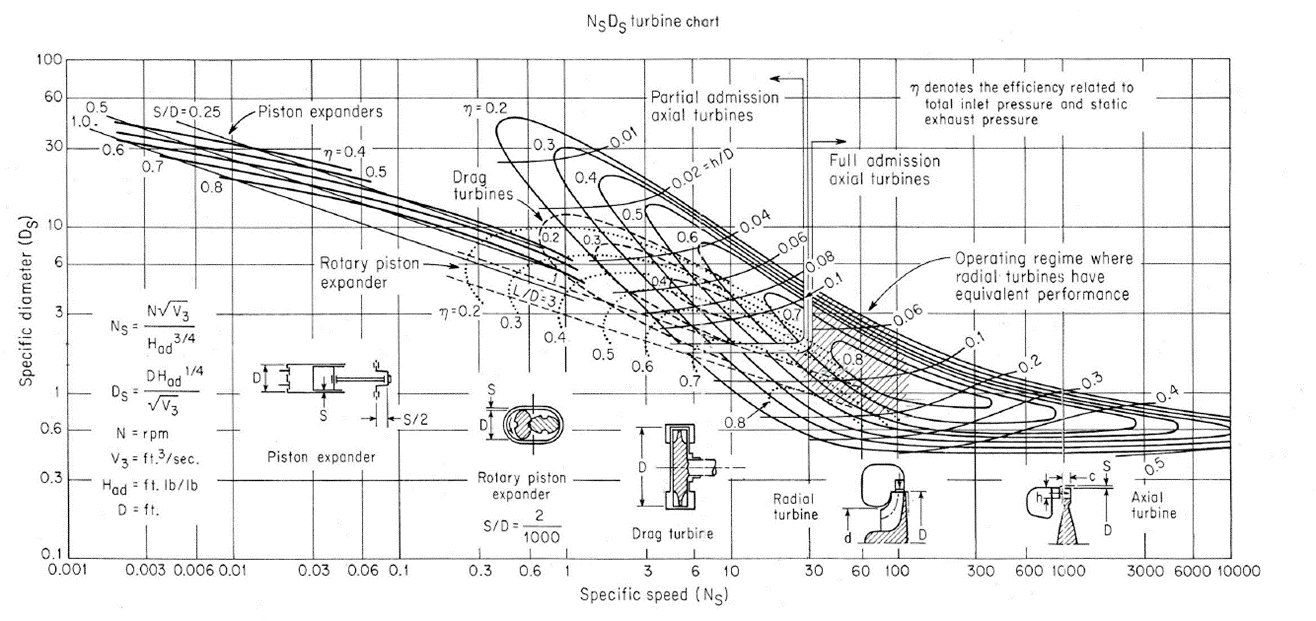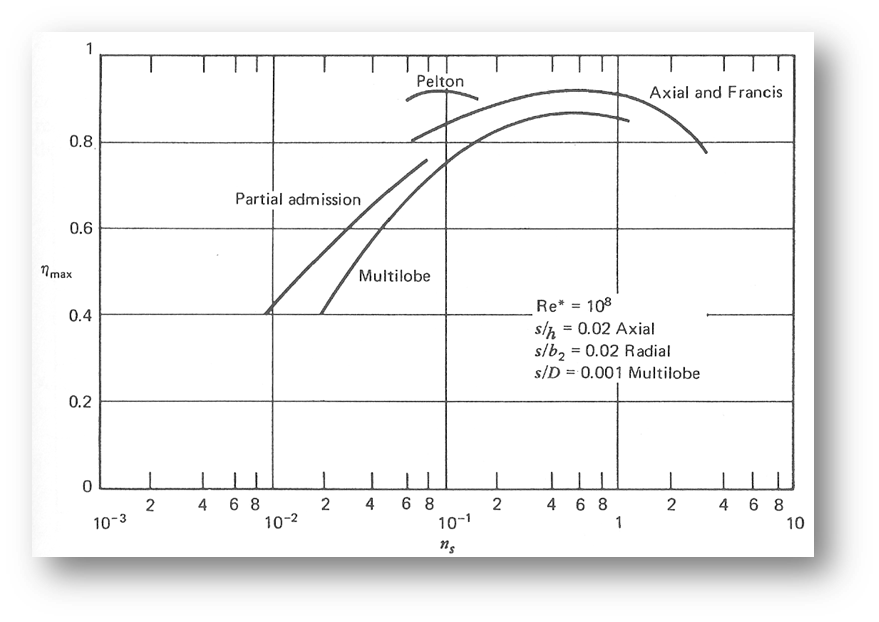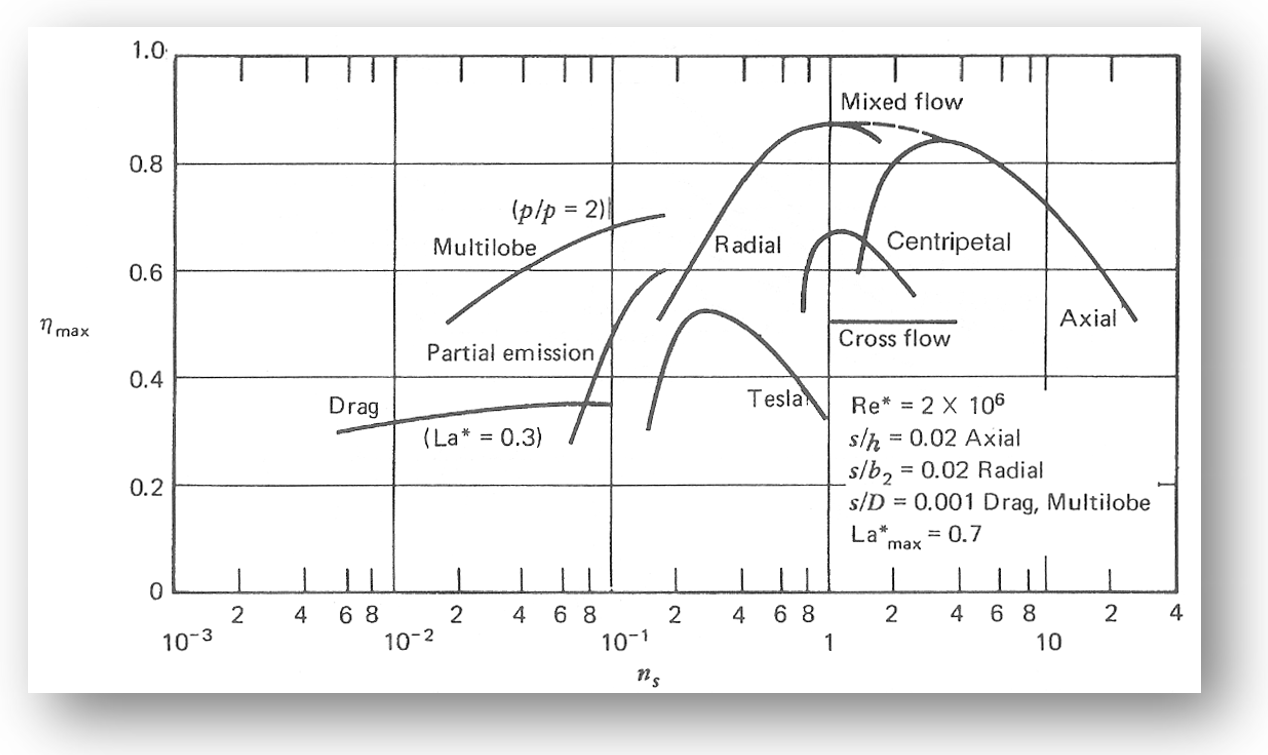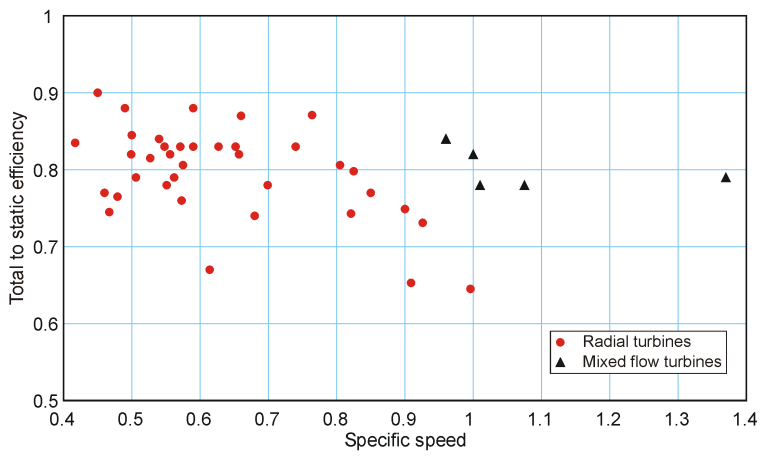The Gyroscopic Effect
This post covers one of the fundamental issues that makes rotordynamics a unique subject: The Gyroscopic Effect. The gyroscopic effect can be observed in the behavior of spinning tops, fidget...
A blog on what's new, notable, and next in turbomachinery
In my last blog, Specific Speed Demystified, I covered the mathematical definition of specific speed and how it relates to flow and work coefficient. The concept of specific speed has been a guiding principle for radial turbomachinery design for many years. Use of specific speed has been most heavily emphasized by Balje in his famous textbook and early publications. In these works, he laid out several graphs that are still widely used today.
The first figure shows islands of potential efficiency for turbines as a function of specific speed and specific diameter, a parameter related to specific speed.

Image from https://barber-nichols.com/media/tools-resources/
The next two plots are more simplified figures from Balje expressing potential efficiency as a function of specific speed alone. The first plot is for radial turbines and the second is for radial compressors.


Images from Introduction to Turbomachinery by David Japikse and Nicholas C Baines
The physical explanation of the poor performance at low specific speed is that long narrow passages generate significant viscous losses that degrade efficiency. The degradation at high specific speed is generally attributed to large curvature in the geometry. Indeed, one of the driving forces for shifting to axial machines at high specific speeds is the need to reduce this effect.
Though widely used, it’s easy to overestimate the effect of specific speed. The figure below plots several different radial turbine designs and clearly shows just how varied the performance can be across the specific speed.

Above Image from Axial and Radial Turbines by
Hany Moustapha, Mark F. Zelesky, Nicholas C. Baines, and David Japikse
These results clearly show that the lines of peak performance as a function of specific speed are much, much blurrier than the sharp lines of Balje’s plots would imply.
The value of specific speed is not in the prediction of performance, but rather as a rough guide to the machine shape needed that will tend to give better performance. Concepts text book, Introduction to Turbomachinery, describes specific speed as, “slightly coarse, but never the less useful, tool for selecting the type of turbomachine required…”.
Tags: CAE Software, Turbines, Engineering
By Thomas Gresham, Senior Mechanical Design Engineer
Mar 6, 2024
This post covers one of the fundamental issues that makes rotordynamics a unique subject: The Gyroscopic Effect. The gyroscopic effect can be observed in the behavior of spinning tops, fidget...
By Mark R. Anderson, Chief Technical Officer, Concepts NREC
Jan 10, 2023
Hydrogen is attracting a lot of interest in different circles these days from: propulsion, to energy storage, to personal transportation. The most obvious benefit of hydrogen fuel is a total lack of...
By Dr. David Schowalter, Sr. Director, Global Software Sales
Jan 3, 2023
Because of its promise as a non-polluting fuel, hydrogen is currently a very popular topic among the energy and turbomachinery communities. If hydrogen is reacted with pure oxygen, the thermal energy...